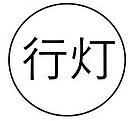Chowa
Pulling the Andon Cord (Doesn’t Make You a PitA)
A significant contributor to Toyota’s massive manufacturing success was the Andon cord. Pulling the cord at your station stopped production, which ultimately improved both the product and process. Inside the correct company culture, being vocal about the problems spotted doesn’t make someone a “PITA” but a dutiful employee.
This piece is part of our Chōwa blog series.

What is Andon?
Andon (pronounced ahn-dawn) is written using the characters 行 (journey) and 灯 (lamp) and literally means a paper Japanese-style lantern. When Toyota created this for use in their factory setting, it literally means yanking a cord at your station that “lights a lantern,” alerting everyone that something is wrong, pausing or stopping production.
This means each member of staff has the power to call a time-out, alerting a supervisor to the issue so they can come to investigate. While it might seem counter-intuitive, this actually produces a much higher-quality product and encourages employee investment in the organization. Defects, issues, or problems are identified earlier on, and individual employees feel a sense of ownership and pride in helping the organization instead of the too-common “well, that’s not my department” attitude.
“Don’t be a PITA!”
That employees should vocalize problems spotted is probably a new idea to most people. Almost everyone has heard phrases like “don’t rock the boat” or “don’t be the office PitA (pain in the ass)”: the general advice is that if you mind your own business and do your job, things will turn out right. But this can create a work environment where sub-par work passes by employees who are either too afraid of being a PITA to say anything or who don’t feel their opinion is trusted enough to make a vocalization worth it.
Companies that invest in their employees and business by creating Anzen (safety) and Shintaku (trust) and that encourage employees to pull the Andon cord will see positive results not only for the quality of the products and projects put forth but also for personnel.
The Positive Effects of Pulling the Cord
Pulling the Andon cord is part of Inedo’s cultural philosophy of Chōwa. If Toyota’s stories aren’t evidence enough that this works, here’s my own Andon story.
About two months into my employment at Inedo, I was armpit-deep in a project where I was collaborating with employees across three different teams on a highly technical writing project. For a little context about me: I have eight years of experience as a university educator and about as much tech/DevOps expertise as a radish. So this was a challenge.
No matter how closely the different teams collaborated, the final product kept turning out wrong. The balance between “technical correctness” and “marketing b.s.” was all wrong. No matter what we tried, it just wasn’t clicking. A few weeks into the project, I yanked the Andon cord. I sent an email to my two higher-ups: “Clearly this isn’t working. We need to stop and reassess because right now we are just wasting time and money (and I’m ready to pull out my hair).”
This was a bold move for someone so new to a company, but I was right. And because of Chōwa, I wasn’t punished for speaking this truth to my superiors, but praised. Pulling the cord was not just a way to make my day-to-day life better; it also demonstrated my commitment to Inedo’s welfare to those higher up than me AND saved the company about three months of working time for a whole team. Significant results.
Andon in Your Organization
Andon is the responsibility of company leadership. The Andon cord CANNOT work if the company doesn’t place lots of trust in employees (Shintaku) and doesn’t create a safe working environment (Anzen). If bringing up a flaw you find in a project that your manager’s manager created might get you fired, of course, you’d stay silent. Employees have to trust that their expertise and point-of-view matter to leadership and that it won’t be used to punish them.
Organizations hoping to make this change should invest company time in training on Toyota’s extensive use of the Andon cord. Once the systems are in place to encourage this behavior, Andon pulls should be visibly praised to demonstrate to other employees that this is not only acceptable but rewarded. Only once the culture of Andon cord is firmly established can organizations make this an expected part of employee behavior. Invest the time necessary to do this right, or don’t do it, cos then you’re just a PITA.
Get the Chōwa Book
Andon is just one of the many elements of Inedo’s new cultural philosophy of Chōwa, or “natural balance.” We will be explaining the various elements of Chōwa here on our blog and on our social media (Twitter, Instagram, and LinkedIn). Subscribe to these channels and download your copy today to learn about Inedo’s unique cultural philosophy of Chōwa.
